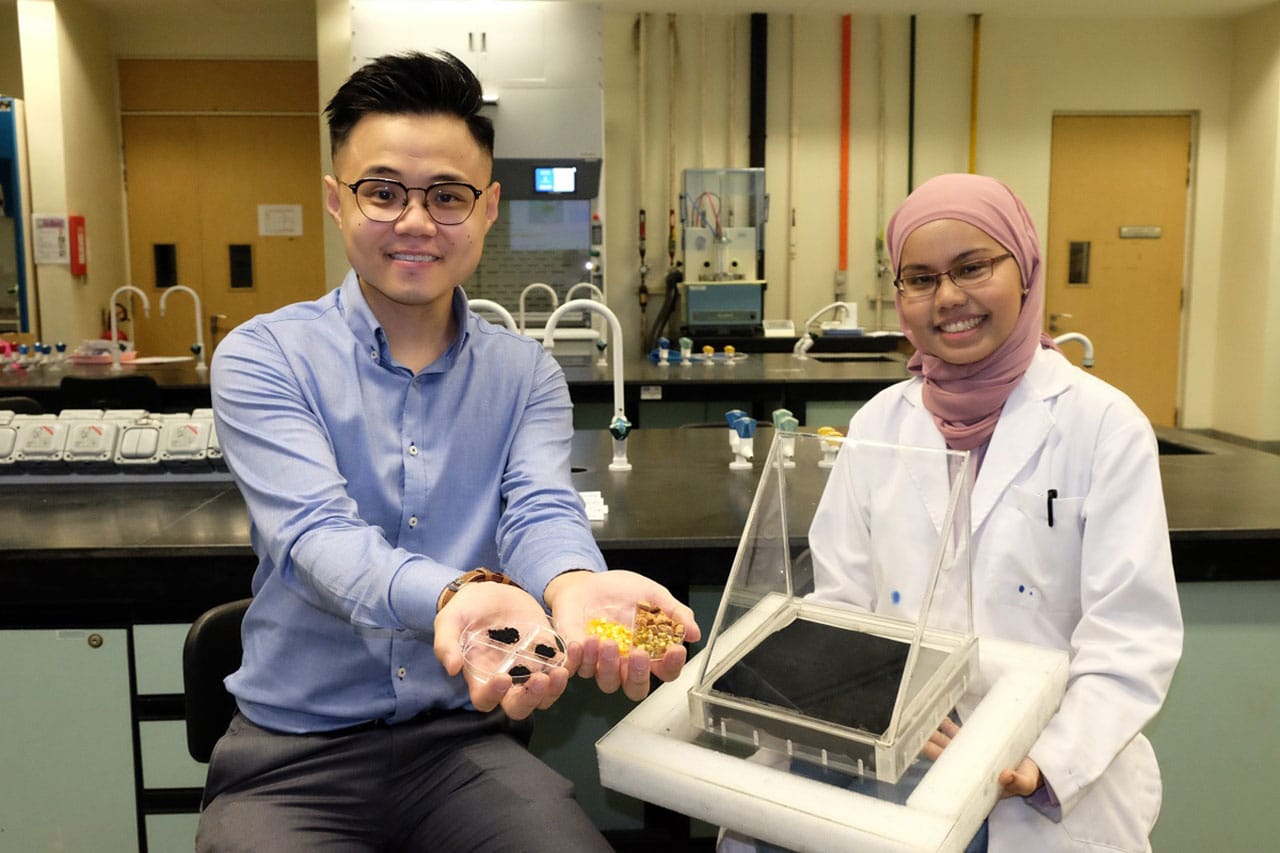
Freshwater production using solar-driven interfacial evaporation is considered a green and sustainable strategy. The biggest barrier to the practical deployment of solar desalination, however, continues to be the lack of options for renewable materials.
A Nanyang Technological University scientist has developed an ultra-thin material made from recycled fruit with exceptional light-to-heat conversion efficiency that can be used in equipment to purify dirty water. The invention can be employed in remote areas and disaster zones where electricity access is limited.
Asst. Prof. Edison Ang and colleagues at Singapore’s Nanyang Technological University successfully used coconut husks, orange peels, and banana peels to make MXenes. MXenes is an electrical-conducting compound with similar properties to graphene, which is commonly used in the electronics industry.
Unlike graphene, MXenes are made from other elements besides carbon, giving them better light-to-heat conversation properties. The two-dimensional layered structure has multiple opening channels that allow water to pass through easily.
MXenes are also outstanding electrical conductors, hundreds of times stronger than steel, and extremely light. Their exceptional properties enable them to replace conventional materials in industrial applications such as energy storage, optical, and sensors.
“Our synthesis process is three times cheaper than commercial methods because the original source that we use (fruit waste) is free of charge,” Prof Ang said in an interview.
For now, researchers plan to use their MXenes in solar cells, which use sunlight to distill dirty water. Traditional distillation requires well-established infrastructure and significant energy costs and, thus, is only affordable in developed countries.
On the other hand, only a thin layer of MXenes is needed to conduct heat from the sun to evaporate the water, so no fossil fuel is required. This makes Asst Prof Ang’s solar still cheaper, more portable, and environmentally friendly than existing methods of distillation. Solar stills can be used in disaster zones and rural areas, where fuel and clean water are usually scarce. He also plans to use his MXene in applications such as energy storage and battery manufacturing.
Prof Ang’s solar absorber prototype is made of MXenes derived from fruit waste and has an average light-to-heat conversion efficiency of 90%, approximately 30% higher than that of the commercial solar absorber. As a result, the water production rate is about 50% higher than that of the commercial ones.
“It (solar still) doesn’t require any electricity because we’re using renewable solar energy, so it is very easy to deploy. As long as you have sunlight, you can use it,” said Prof Ang. “This will be especially beneficial to the underprivileged community. When we tested our water quality against PUB standards, we met those drinking standards.”
The team is developing the technology further and is seeing industry partners to help with its commercialization.
Turning fruit waste into useful materials for water purification
Source: Tambay News

0 Comments